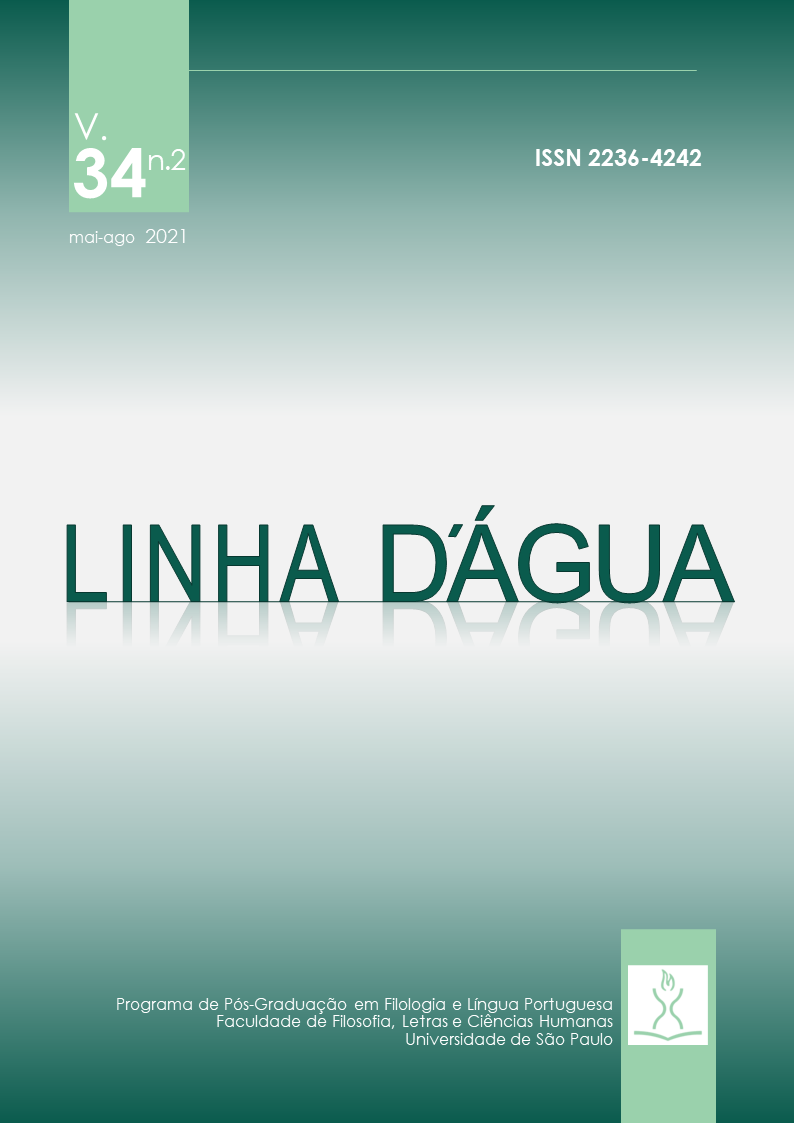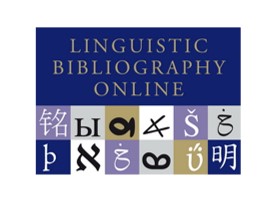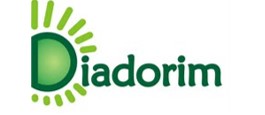Building Digital Humanities on the Linguistic Background: Methodological Basis for Digital Humanities Education in Undergraduate and Graduate Programs
DOI:
https://doi.org/10.11606/issn.2236-4242.v34i2p83-102Keywords:
Digital Humanities, Education, Methodology, Philosophy of Science, Quantitative Linguistics, Study ProgramsAbstract
The transformation of society towards digitalization and automatization cannot be ignored by the higher education system. While this has been naturally reflected by the education system regarding technical sciences, humanities are still struggling to catch up with the latest trends in the digitalization of society. The field of Digital Humanities (DH) is very young and lacks a solid methodological basis or ontological principles. This paper aims at proposing some philosophical and methodological grounding for the field of DH and its practical applications in the higher education system. We describe two case studies of the creation of new study programs at the Palacký University Olomouc, Czech Republic.
Downloads
References
ALTMANN, G. (1978). Towards a theory of language. In: ALTMANN, G. (Ed.). Glottometrika 1. Bochum: Studienverlag Dr. N. Brockmeyer, 1978, p. 1-25.
AMARO, R. WordNet as a base lexicon model for the computation of verbal predicates. Proceedings of GWC 2006, Global WordNet Association Conference, 2006.
AMARO, R. Extracting semantic relations from Portuguese corpora using lexical-syntactic patterns. In: Conference LREC 2014 - 9th Language Resources and Evaluation, 2014, Reykjavik.
AMARO, R.; MENDES, S.; PALMIRA, M. Increasing Density through New Relations and PoS Encoding in WordNet.PT. International Journal of Computational Linguistics and Applications, v. 4, n. 1, p. 11-27, 2013.
BENEŠOVÁ, M.; FALTÝNEK, D.; ZÁMEČNÍK, L. Menzerath-Altmann Law in Differently Segmented Texts. In: BENEŠOVÁ, M.; MAČUTEK, J.; TUZZI, A. (Eds.) Recent Contributions in Quantitative Linguistics. Berlin: De Gruyter Mouton, 2015, p. 27–40.
BEREZOVSKY, I. N.; KIRZHNER, V. M.; KIRZHNER, A.; ROSENFELD, V. R.; TRIFONOV, E. N. Protein sequences yield a proteomic code. Molecular Biology, v. 36, n. 2, p. 239–243, 2002.
BOLSHOY, A. DNA sequence analysis linguistic tools: contrast vocabularies, compositional spectra and linguistic complexity. Applied bioinformatics, v. 2. p. 103–112, 2003.
BUSA, R. The Annals of Humanities Computing: The Index Thomisticus. Computers and the Humanities, v. 14, n. 2, p. 83-90, 1980.
CABRÉ, T. M. Terminology: Theory, methods and applications. Amsterdam: John Benjamins Publishing, 1999.
CALDARELLI, G. Scale-Free Networks: Complex Webs in Nature and Technology. Oxford University Press, 2007. Available in: https://EconPapers.repec.org/RePEc:oxp:obooks:9780199211517. Last accessed: 27 Apr. 2021.
CAMPBELL, R.; REIBLE, D.; TARABAN, R.; KIM, J. More than a Dream: The Developing Reflective Engineers through Artful Methods (DREAM). Project Paper presented at Gulf Southwest Section Conference, 2020. Avaible in: https://jee.org/36012. Last accessed: 27 Apr. 2021.
CHEN, R.; LIU, H. Thematic concentration as a discriminating feature of text types. Journal of Quantitative Linguistics, v. 25, n. 1, p. 53-76, 2018.
COLLIER, P. The Future of Capitalism. Facing the New Anxieties. London: Penguine Random House, 2018.
COSTA, R., SILVA. R. et al. Glossário Colaborativo COVID-19. Available in: https://www.lexonomy.eu/ec25mm79/ Last accessed: 27 Apr. 2021.
DERRIDA, J. Of Grammatology. London: Johns Hopkins University Press, 1976.
EUROPEAN COMMISSION. Strategic Plan 2020-2024 – Education, Youth, Sport and Culture. 2020. Available in: https://ec.europa.eu/info/publications/strategic-plans-2020-2024_en Last accessed: 27 Apr. 2021.
EUROPEAN COMMISSION. Strategic Plan 2020-2024 – Research and Innovation. 2020. Available in: https://ec.europa.eu/info/publications/strategic-plans-2020-2024_en Last accessed: 27 Apr. 2021.
EUROPEAN COMMISSION. The Digital Europe Programme. Available in: https://ec.europa.eu/digital-single-market/en/europe-investing-digital-digital-europe-programme Last accessed: 27 Apr. 2021.
FALTÝNEK, D.; MATLACH, V.; LACKOVÁ, Ľ. Bases are Not Letters: On the Analogy between the Genetic Code and Natural Language by Sequence Analysis. Biosemiotics 12, p. 289–304, 2019. Available in: https://doi.org/10.1007/s12304-019-09353-z Last accessed: 27 Apr. 2021.
FALTÝNEK, D., MATLACH, V. (2021). Forthcoming
FERRER-I-CANCHO, R., SOLÉ, R. V. The small world of human language. Proceedings of the Royal Society B. London, 268, p. 2261–2265, 2001.
FOUCAULT, M. The Archaeology of Knowledge. New York: Pantheon Books, 1972 [1969].
FOUCAULT, M. The order of things: An archaeology of the human sciences. New York: Vintage Books, 1994[1966].
GIERE, R. N. Scientific Perspectivism. Chicago: The University of Chicago Press, 2006.
GLOGAROVÁ, J. D., & KUBÁT, M. Srovnávací frekvenční analýza exilových projevů Klementa Gottwalda a Edvarda Beneše z let 1939-1945. Slovo a Slovesnost, v. 81, n. 1, p. 65-77, 2020.
GRZYBEK, P. Introductory Remarks: On the Science of Language in Light of the Language of Science. In: Grzybek, Peter (Ed.) Contributions to the Science of Text and Language. Word Length Studies and Related Issues. Dordrecht: Springer, 2006, p. 1-14.
HERDAN, G. The Advanced Theory of Language as Choice and Change. Berlin: Springer-Verlag, 1966.
HŘEBÍČEK, L. Some aspects of Power Law. Glottometrics, v. 6, p. 1-8, 2003.
JANEČKOVÁ, B. A.; TICHÁ, A.; FIEDLER, J. Třikrát o autorství. Olomouc: Palacký University Press, 2021.
JENSEN, K. E. Linguistics in the digital humanities: (computational) corpus linguistics. MedieKultur: Journal of Media and Communication Research, v. 30, n. 57, p. 115-134, 2014. Available in: https://doi.org/10.7146/mediekultur.v30i57.15968 Last accessed: 27 Apr. 2021.
KELLERT, S. H. Borrowed Knowledge: Chaos Theory and the Challenge of Learning across Disciplines. Chicago: The University of Chicago Press, 2008.
KLEIN, N. No Is Not Enough: Resisting Trump’s Shock Politics and Winning the World We Need. Toronto: Knopf Canada, 2017.
KÖHLER, R. Quantitative Syntax Analysis. Berlin: De Gruyter, 2012.
KÖHLER, R. Synergetic Linguistics. In: KÖHLER, R.; ALTMANN, G.; PIOTROWSKI, R. G. (Eds.) Quantitative Linguistics: An International Handbook. Berlin: Walter de Gruyter, 2005, p. 760–774.
KÖHLER, R. Zur linguistischen Synergetik: Struktur und Dynamik der Lexik. Bochum: Brockmeyer, 1986.
KOŘENSKÝ, J. Procesuální gramatika v kontextu současných tendencí lingvistického myšlení. Slovo a Slovesnost, v. 64, p. 1-7, 2003.
KUBÁT, M.; MATLACH, V.; ČECH, R. QUITA. Quantitative Index Text Analyzer. Lüdenscheid: RAM-Verlag, 2014.
LAUDAN, L. Dissecting the Holist Picture of Scientific Change. In: CURD, M., COVER, J. A. (Eds.) Philosophy of Science: The Central Issues. New York: W. W. Norton & Company, p. 139-169, 1998.
LEE, K.-F. AI Superpowers: China, Silicon Valley, and the New World Order. Boston, Mass: Houghton Mifflin, 2018.
LESCH, K. On the Linguistic Structure of Emotional Meaning in Czech. Ph.D. thesis, Faculty of Mathematics and Physics, Charles University in Prague, Prague, Czech Republic, 2015.
LIU, H.; LIANG, J. (Eds.). Motifs in Language and text. v. 71. Berlin: De Gruyter Mouton, 2017.
MEYER, P. Laws and Theories in Quantitative Linguistics. Glottometrics, v. 5, p. 62-80, 2002.
POPESCU, I. I.; MIANGAH, T. M.; GNATCHUK, H.; CECH, R.; BODOC, A; ALTMANN, G. On Rank-Frequency Distributions in Poetry. Glottometrics, v. 38, p. 30-54, 2017.
QUINE, W. V. O. From a Logical Point of View. New York: Harper, 1953.
ROSS, A. The industries of the future. New York: Simon & Schuster, 2016.
SALGADO, A.; COSTA, R. (2019). LeXmart: a smart tool for lexicographers. In: Electronic lexicography in the 21st century (eLex 2019): Smart lexicography, 2019, Sintra.
SALGADO, A.; COSTA, R. (2020). O projeto “Edição Digital dos Vocabulários da Academia das Ciências”: o VOLP-1940. Revista Da Associação Portuguesa De Linguística, v. 7, p. 275-294, 2020. Available in: https://doi.org/10.26334/2183-9077/rapln7ano2020a17 Last accessed: 27 Apr. 2021.
SMITH, B. C. The Promise of Artificial Intelligence: Reckoning and Judgment. Cambridge: The MIT Press, 2019.
VARMUŽOVÁ, B. Určování autorství Slezských písní. Olomouc, [cit. 2021-01-17]. Dostupné z: https://theses.cz/id/3p64qh
VEYNE, P. Foucault: His Thought, His Character. Cambridge: Polity Press, 2010.
ZÁVODNÍ, Š. Proměny verbálního projevu účastnic výchovně vzdělávacího procesu ve vztahu k biorytmům. Hradec Králové, 2020 [cit. 2021-01-17]. Dostupné z: https://theses.cz/id/divq2d/
Published
Issue
Section
License
Copyright (c) 2021 Lukáš Zámečník, Ľudmila Lacková

This work is licensed under a Creative Commons Attribution-NonCommercial 4.0 International License.
The Editorial Board authorizes free access to and distribution of published contentes, provided that the source is cited, that is, granding credit to the authors and Linha D'Água and preserving the full text. The author is allowed to place the final version (postprint / editor’s PDF) in an institutional/thematic repositor or personal page (site, blog), immediately after publication, provided that it is available for open access and comes without any embargo period. Full reference should be made to the first publication in Linha D'Água. Access to the paper should at least be aligned with the access the journal offers.
As a legal entity, the University of São Paulo at Ribeirão Preto School of Philosophy, Sciences and Languages owns and holds the copyright deriving from the publication. To use the papers, Paidéia adopts the Creative Commons Licence, CC BY-NC non-commercial attribution. This licence permits access, download, print, share, reuse and distribution of papers, provided that this is for non-commercial use and that the source is cited, giving due authorship credit to Linha D'Água. In these cases, neither authors nor editors need any permission.
Partial reproduction of other publications
Citations of more than 500 words, reproductions of one or more figures, tables or other illustrions should be accompanied by written permission from the copyright owner of the original work with a view to reproduction in Linha D'Água. This permission has to be addressed to the author of the submitted manuscript. Secondarily obtained rights will not be transferred under any circumstance.










